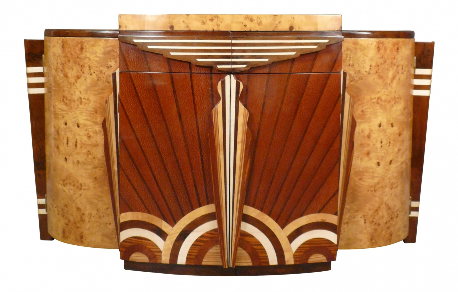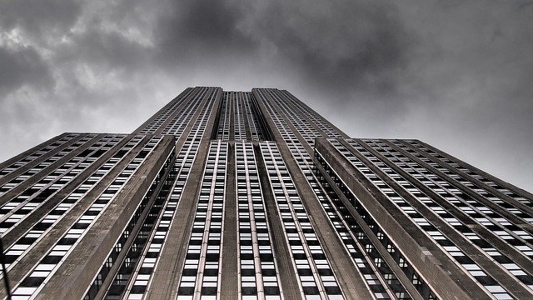Making the difference between Art Deco and Art Nouveau is often confusing. They appeared in the wake of the industrial revolution and just before the First World War, the art deco period corresponded to that of the Roaring Twenties. Despite the modernist elements that characterize them, it is possible to distinguish them if one does.
What is the difference between Art Nouveau and Art Deco?
The Art Movement ranged from the end of the nineteenth century to the eve of the First World War. It has adopted the new industrial aesthetic of Europe. Art Nouveau is made of naturalistic forms with many styles. They are geometric and consist of arches, parables and semicircles. With this movement, natural forms such as insects have been introduced, both in the art nouveau furniture than in decorative objects.
On the other hand, the appearance of Art Deco took place around 1910 before the First World War. Following the war and the deprivations it induced, extravagance and wealth appeared in the style of Art Deco. This style reigned from the 1920s until the Second World War. It also uses modern materials such as stainless steel, encrusted wood and chrome. With natural materials, it tends to be textured or graphic, like zebra skin.
Art Deco and Art Nouveau: definitions and characteristics
Art Nouveau is an ornamental style that flourished in the late 19th century in the United States and the Old Continent. It is characterized by the use of a sinuous, long, and organic line. Art Nouveau has been used most often in interior design, architecture, posters, illustrations, jewelry and glass design. It was an attempt to create a new style, free from the imitative historicism that characterized much of the art and design in the nineteenth century.

For its part, Art Deco is a movement that took its essence at the end of the Great War. In the 1930s, it gained popularity to become a major style. According to some rumors, its name is owed to the architect Le Corbusier. However, it was during the international exhibition of modern decorative and industrial arts held in 1925 in the French capital that the name Art Deco first appeared. Art Deco is characterized by refined geometric shapes and the use of different synthetic or artificial materials.
Art Deco and Bahaus
Art Deco and Bauhaus are two opposing theories. They also use different materials, design methods and styles. The Bauhaus is an artistic movement born in Germany after the First World War. In this movement, student teachers are encouraged to work together in both design workshops and studios. The accession of the Nazis to power will contribute greatly to the closure of the school.
The Bauhaus style is characterized by rigid angles of civil engineering giving rise to buildings that many historians describe as having seemed to have been created without human intervention, that is, without emotions. This rigid aesthetic has given priority to mass function and production. He was instrumental in the global redesign of everyday buildings.
Furniture and decoration: two different styles
Furniture and decoration are confusing terms. However, these are two distinct styles. Furniture refers to decorative items such as cushions, curtains, lamps, bed or linen.
While the decoration is directly related to the decorative arts. It allows you to embellish a room or an object. Thus, decorating consists, for example, of having a particular style of furniture in a room, painting the walls of a unique color, etc.
The most famous artists
Many artists specializing in Art Deco or Art Nouveau, such as Hector Guimard, have marked the history of these two movements thanks to their remarkable works.
Paul Hankar
Born on December 11, 1859, Paul Hankar was a Belgian architect and furniture designer who greatly influenced the Art Nouveau style. He began his career by creating and sculpting funerary monuments. Subsequently, Paul Hankar became the foal of the architect Hendrik Beyaert between 1879 and 1892. The latter will train him in architecture.
The opening of his office in 1893 in Brussels marked the beginning of the construction of his home called The Hankar Residence. The Hankar House and Victor Horta's Tassel Hotel will become the first two houses built in the Art Nouveau style of the famous architect.
Aubrey Beardsley
Despite a significantly shortened career due to the onset of tuberculosis, Aubrey Beardsley has had a remarkable impact in the field of illustration. Throughout his short seven-year career, Breadsley has distinguished himself with controversial works. Thus, his illustration of Oscar Wilde's play salome is considered one of the most contested of the Art Nouveau style.
Antoni Gaudi
Antoni Gaudi was a pioneering architect who worked mainly in cataloguing, especially in Barcelona. His style can be found all over the city. He was inspired by the Catholic faith and nature. His work is thus marked by curved lines and vibrant surfaces that stand out from typical architectural productions. For example, the benches in the park are made to align with the human spine. On the other hand, the balconies of Casa Mila represent abstractions of leaves and blades of grass. It was this inspiration that separated Gaudi from the other styles of the time and distinguished him as a member of Art Nouveau.
Louis Comfort Tiffany
Art Nouveau artist Louis Comfort Tiffany born on February 18, 1848 in New York died on January 17, 1933, he specialized in jewelry design, ceramics, enamels and ironwork, but he is best known for his magnificent stained glass creations. Using opalescent glass in a variety of colors and textures, he has created an amazing range of Art Nouveau works resembling jewelry, the Most expensive Tiffany lamp in the world sold for more than $500,000 at an auction.
Louis Majorelle
Louis Majorelle founded the Nancy School with Émile Gallé. He has been a mentor and guide to his work. Before they met, Majorelle's work copied antique-style furniture. This decisive encounter allowed Majorelle to add new forms and themes inspired by nature to his works.
René Jules Lalique
This designer in the field of Glassworks is arguably the most famous in the world. His legacy is still strong today. Indeed, many collectors are still snapping up his works. Born in Paris in 1860, René Jules Lalique has become one of the most famous Art Nouveau jewelry designers. He has collaborated with major French jewellers such as Cartier and Boucheron.
In the 1920s, René Jules turned his back on Art Nouveau for the emerging Art Deco style trends. His pieces then became more neat. He began experimenting with new materials such as metal or enamel. However, glass pieces remain her favourite. However, they have new prismatic qualities.
Le Corbusier
The architect Charles-Édouard Jeanneret-Gris, also known as Le Corbusier, was initially one of the fiercest opponents of the decorative arts. However, over the years he has become one of art deco's most renowned artists. You can visit the Le Corbusier website, which offers tours and a rich documentation on his works.
In 1925, the famous Architect offered Art Deco products that were in contrast to the "eye-catching" motifs proposed by the Art Nouveau movement. Le Corbusier was adept at a purist aesthetic, a standardized habitat and rigorous designs. Le Corbusier's works were quite close to the Bauhaus. They were opposed to the expensive productions that are characteristic of the artists of the Art Deco movement.
Architecture in the world
The discovery of the culture of a place can be done in several ways. It can for example be dialect, food or even fashion. Nevertheless, architecture is definitely a great way to learn more. In the world, there are several Art Deco buildings, such as the Empire State Building and in Art Nouveau bourgeois houses and mansions, but also decorations for Parisian metro mouths.
- The Casa Batllo in Barcelona was designed by Antoni Gaudi. It is located on the Passeig de Gràcia. The Casa Batllo is one of his best-known works that alludes to the legend of St. George and the Dragon.
- The architect Otto Wagner played a role in the reinvention of the city of Vienna at the dawn of the twentieth century. The Majolikahaus apartment building is one of his most accomplished and appreciated works. It was completed in 1898.
- The National Basilica of the Sacred Heart of Brussels was built to celebrate the 75th anniversary of the independence of the flat country. It's Art Deco style.
- The Empire State Building in New York was built in 1931. It is a 103-storey skyscraper that held the record for 83 years for the tallest building in the city.
Apart from their periods of appearance, the main difference between Art Deco and Art Nouveau is essentially aesthetics. The organic and fluid forms that characterize Art Nouveau represent a precise response to the desire of artists to detach themselves from organized and ordinary structures that are far too rigid. On the other hand, the bold and refined designs of Art Deco greatly echo the charm of the industrial revolution.



